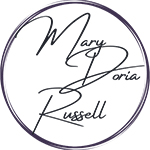By now you’ve probably heard that astronomers have announced the existence of “Earth-mass world in orbit around Proxima Centauri.” As in any scientific discovery, there are a lot of caveats and careful hedging of the announcement, but this appears to be legit. And just in time for the 20th anniversary of The Sparrow!
I’m getting lots of tweets and email from readers about this, including messages from astronomers who are fans of the novel. Dr. Tim Hankins, former site director of the Arecibo Observatory, was especially kind, saying that the discovery “reinforces how much you got right in The Sparrow and Children of God.” High praise, indeed!
Of course, I am only one of many authors and screenwriters who’ve written about going to our nearest stellar neighbor. If you’re telling a story about interstellar travel and if you’re trying to minimize the violence you do to the laws of physics, the three-star Centauri system is the least implausible destination. Although, as Jimmy Quinn says in The Sparrow, 4.3 light years is still a nontrivial distance!
So let me tell you my all-time favorite story about the reaction to my first novel.
After The Sparrow was published in 1996, the book won a bunch of prizes, including the prestigious Arthur C. Clarke Award. Sir Arthur did not personally choose the winners, but he endowed the prize and was sent a copy of each year’s winning novel.
One morning in 1997, my email included a note from Arthur C. Clarke his very own self. He told me that his first satellite dish was installed at his home in Sri Lanka by a Jesuit friend. He had been in touch with George Coyne, SJ, the Pope’s astronomer, who had also read The Sparrow. In the email, he quoted Father Coyne saying that the book was rather good but in all honesty, he didn’t consider it science fiction. In his opinion, science fiction had to be about mathematics, physics, and/or astronomy.
To which, I replied to both, “Look, guys, they do not give the Arthur C. Clarke Award to mysteries. I hold a doctorate in biological anthropology and I call myself a scientist with a straight face. I admit there isn’t a whole lot of math in The Sparrow, but there is as much physics and astronomy as required to tell the story. There is also a good deal of linguistics, social and cultural anthropology, geology, meteorology, climatology, paleontology, comparative anatomy and population genetics.”
To which, Father Coyne replied he guessed he’d have to change an attitude about what constitutes science!
Sir Arthur added that he personally liked the book, but found the ad hoc “Hey, kids, let’s build a spaceship!” elements of the story unrealistic. I admitted that I’d lowballed the amount of time and the technology that would be needed to get to Alpha Centauri.
On the other hand, many other SF writers (Sir Arthur among them) used years-long “stasis” to explain away how humans could live long enough to travel between stars. Stasis, I pointed out, is a bit of fictional hand-waving every bit as unrealistic as anything I’d included in my novel.
“To tell a story about interstellar travel, we have to choose between the science and the fiction. We have to lie about something. You lied about the biology and I lied the physics.”
To which, Sir Arthur replied, “Doria 1, Clarke 0!”
We went on to have a short but delightful correspondence. He always called me “Doria” and he always signed himself “Art.”
P.S. Before you ask, AMC owns The Sparrow and, last I heard, they are planning to adapt it for a television series. I won’t be involved in anyway, I’m afraid, but I’ll post any news I get, if they ever do anything with it.
